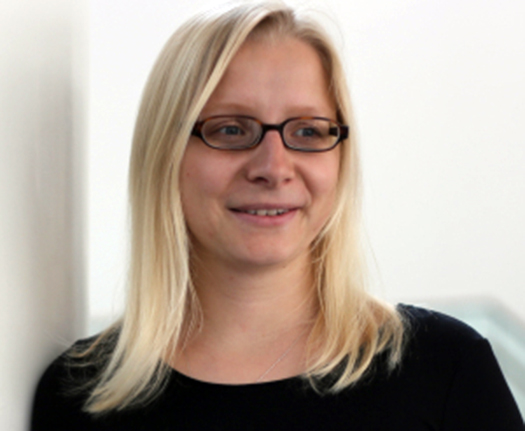Faculty Impact: How are digitalization and diversity changing leadership in journalism?
 In September 2017, the German public television broadcaster ZDF debuted the series Zarah – Wilde Jahre [Zarah – Wild Years]. Set in the 1970s, it featured a women’s rights activist hired as deputy editor-in-chief at one of West Germany’s most widely read news magazines. In each episode, she is under attack both as a woman and as a woman holding a leadership position in the newsroom. Zarah is seen pushing back against prejudice: that women are able to write but not able to lead; that they are unfit to cover politics; and that they serve best as sex objects on front pages or as tokens at public events to signal progress while efforts to include their voices stagnate.
In September 2017, the German public television broadcaster ZDF debuted the series Zarah – Wilde Jahre [Zarah – Wild Years]. Set in the 1970s, it featured a women’s rights activist hired as deputy editor-in-chief at one of West Germany’s most widely read news magazines. In each episode, she is under attack both as a woman and as a woman holding a leadership position in the newsroom. Zarah is seen pushing back against prejudice: that women are able to write but not able to lead; that they are unfit to cover politics; and that they serve best as sex objects on front pages or as tokens at public events to signal progress while efforts to include their voices stagnate.
Although since the first “Fall Meeting of Women in Media” in 1978 in West Germany, women journalists have been organizing for change, nearly 40 years later, in a reunified Germany, many of Zarah’s challenges remain real. In February 2012, 350 woman journalists signed and sent an open letter to editors-in-chief in Germany demanding they bring the number of women in leadership positions in their newsrooms to 30 percent within five years. This so-called ProQuote [Pro Quota] initiative started a public debate that continues to resonate. In 2012, only two percent of editors-in-chief at 360 German newspapers were women, and of the 12 public broadcast director posts, only three were filled by women, while weekly news magazines were also almost exclusively headed by men. These low numbers were particularly striking as the majority of journalists in Germany are women.
While the ProQuote initiative has focused on counting the number of women in newsroom leadership to re-establish benchmarks, I interviewed – together with my co-author Dr. Karin Assmann of the University of Georgia – 53 women and men journalists in leading and non-leading positions in 21 national news media in Germany about their perception of changes in work culture, work conditions, and news selection since the quota initiative. While some newsrooms’ work culture, coverage, and work conditions improved, giving women more leadership opportunities and eliminating macho atmospheres, others did not. These changes in culture, conditions, and coverage seem to relate to a critical mass of women; that is, only if critical mass was (nearly) reached or superseded per newsroom did culture change occur.
I am particularly interested in analyzing the substantial levels of change for women, especially minority women, in newsrooms – beyond symbolic and representative levels, often measured in numbers – through qualitative methods such as interviews, focus groups, and ethnographic newsroom observation, but also in combination with computer-assisted analysis tools such as MaxQDA. While crunching numbers is efficient and powerful to yield a set of facts, the time-consuming work that demands human interactions is a crucial complement to fill in the picture about how work cultures and conditions, editorial decisions, and newsroom dynamics are changing due to digitalization and discourses about diversity in content and production.
While our study focused on gender, it became clear that there is a persistent lack of intersectionality within German newsrooms and their leadership, and also in research about the demographics in German newsrooms. Despite this progress, observations from our sample suggest that women who benefited the most have been West Germans without a migration biography and without children, living with an opposite-sex partner. Improvements in just one category of othering, the category of woman, have elevated people who otherwise closely align with other dominant aspects of German society, leaving out East German, migration biography, and LGBTQ perspectives.
Learning from the perspectives of women journalists in leading positions, and understanding their narratives around work conditions, can put newsrooms at an advantage for recruiting women with diverse backgrounds into leadership. Yet, it remains necessary to counteract the lingering dynamics of tokenism that put women under particular scrutiny.
You can find more about my research at www.stineeckert.com and can follow my activities and work on Twitter @stineeckert.
By Stine Eckert, Ph.D., Associate Professor, Department of Communication